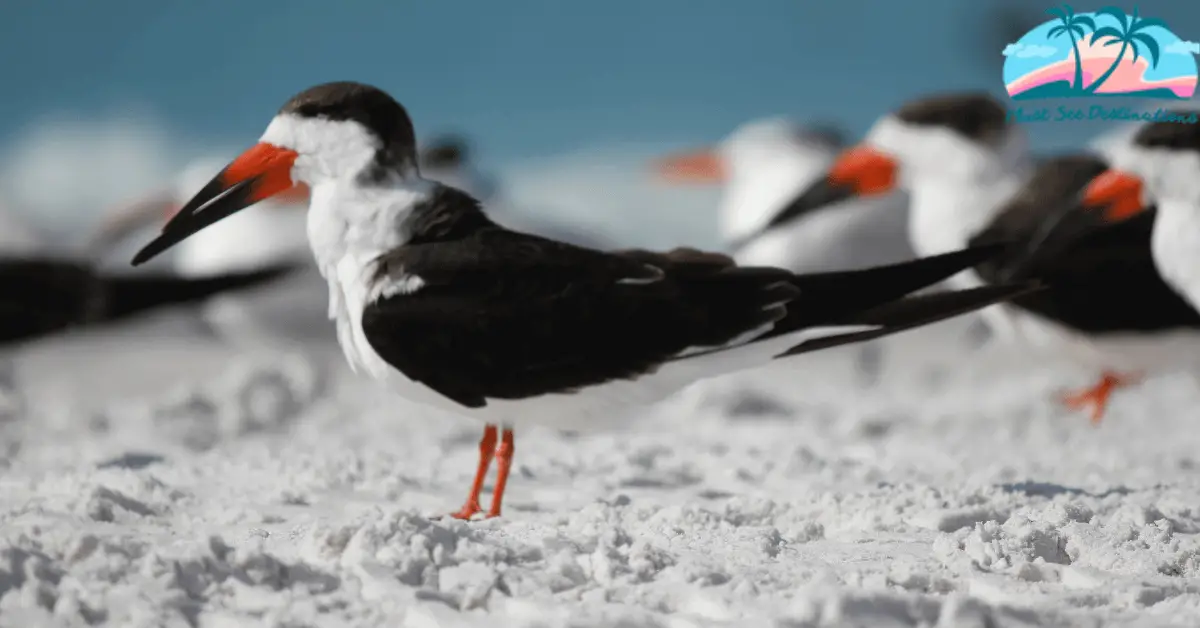Shore Birds of Florida: Birds on the beaches look as beautiful as flowers in gardens or stars in the sky. But what kind of birds are those squawking, soaring, and diving along the Sunshine State’s beaches and shorelines?
With this helpful guide about shorebirds of Florida, you’ll be able to know about terns and gulls and more shorebirds of Florida.
Florida’s coastline stretches from the Atlantic Ocean to the Keys, then around to the Gulf, then north and west over the panhandle. With so many coastlines, you’re bound to see a variety of shorebirds in Florida. As a result, we’re going to focus on some of Florida’s most common and attractive Florida shorebirds.
These birds fly over lakes, swim in the ocean, and rest on seawalls and piers. These birds are most active in the morning and evening, so you’ll see them throughout those times. Because many of the birds are migrating, hundreds of others can be found in large numbers during the fall and winter months.
Jump to:
Gulls Shore Birds Florida:
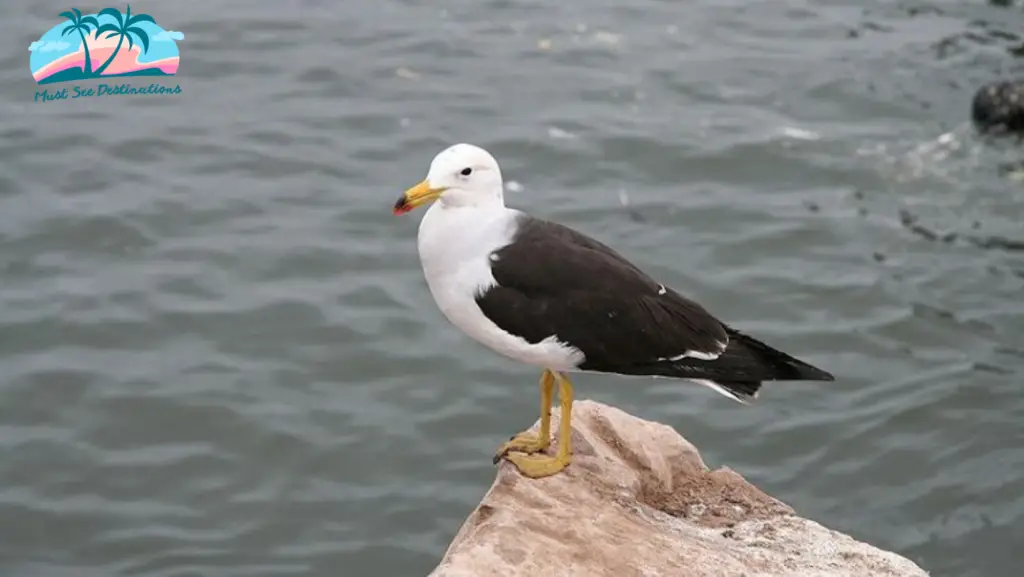
Seagulls are the popular name for these shorebirds. It’s the common term for any species in the Laridae family. In truth, there is no such thing as a “seagull” species…it’s just a gull.
And boy, do they come in a variety of shapes and sizes. They enjoy flying over the coast, but they also enjoy flying in parking lots, sports stadiums, and even as far inland as Iowa and Kansas! Every continent, including Antarctica, is home to the Gull species.
They are the world’s most numerous and widely distributed bird family. Gulls feel at ease wherever they are.
Ring-Billed Gull Shore Birds Florida:

The Ring-Billed Gull (Larus delawarensis), a vast, light grey bird with a yellow bill with a black bar around the tip, is a close relative.
The feathers of most gulls are grey or blackish above and white below, with a counter-shaded pattern. Their legs, feet, and bills can range from grey to pink to vivid red, orange, or black.
These and other birds like to mix it up on the beach and in the air, so you’ll have to pay close attention to their plumage and beaks to recognize them.
These acrobatic birds are also not afraid of humans. If you’ve ever been to the beach, you’re aware of how they like to swoop down and take food from your hands, possibly even stealing it.
Laughing Gulls:
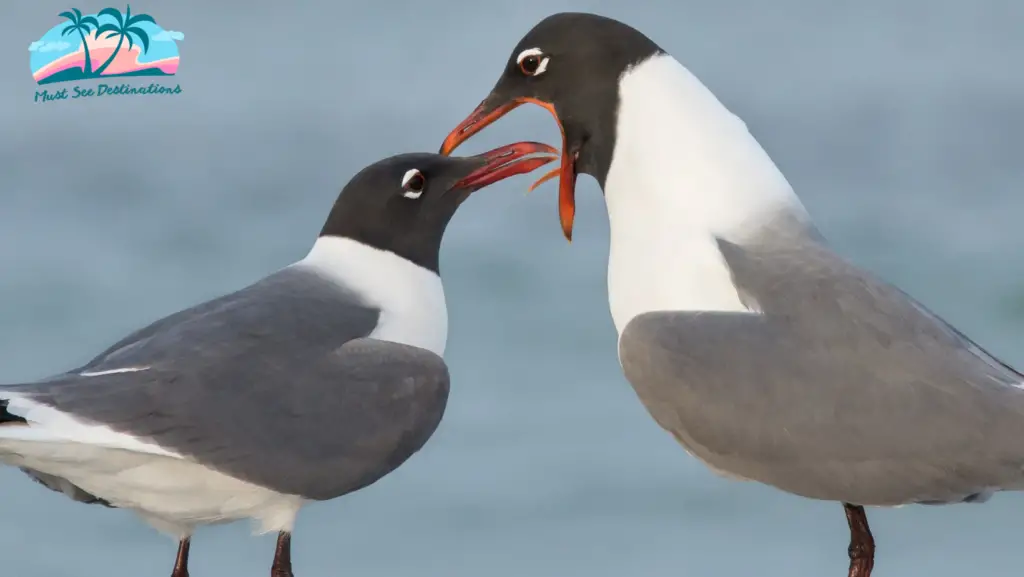
Laughing Gulls (Leucophaeus atricilla) can be found in Florida, and their name comes from their sound. It appears that they are giggling. Because of their blackhead, they are easy to spot.
Herring Gull:
The Herring Gull (Larus argentatus), a huge light grey bird with pink-colored legs, is another species you’ll observe.
Royal Tern Shore Birds Florida:
In North America, there are 16 species; the Royal Tern (Thalasseus Maximus) is one of the 12 Terns found in Florida.
You might mistake a Royal Tern for a Gull at first glance. They have a striking resemblance. On the other hand, Royal Terns have a lighter, more buoyant flight. They have a slimmer, narrower body. Terns have sharp beaks and forked tails. They have an orange beak and a shaggy blacktop.
Terns can hover 10 to 30 feet above the sea for a brief moment before gracefully diving into the waves to snag a fish.The Royal Tern is the largest of the terns. Although related to the Gull, Royal Terns are rarely seen inland.
Sanderlings Shore Birds Florida:

Sanderlings, sometimes known as “peeps,” are shorebirds in Florida with black bills, dark eyes, and short, black legs. When you spot them near the water’s edge, probing around in the damp sand for food, you’ll know who they are.
They usually travel in groups of a dozen or less, scurrying on their tiny legs just ahead of the crashing waves. They tend to travel in flocks on the ground. On Florida beaches, they’re a common sight.
The Sanderling is a little sandpiper that feeds on sand crabs, insects, marine worms, small mollusks, and other small animals. The High Arctic Tundra is where these birds nest before migrating south.
Pelicans Shore Birds Florida:
Brown Pelicans (Pelecanus occidentalis) are large seabirds with a stocky appearance. When gliding, they have long wings that sort of bend out. They have small necks and large bills with an elastic throat pouch, making them humorous or fanciful. This neck pouch is what enables them to catch fish.
These birds may be seen flying over the water searching for prey; after all, the Brown Pelican is a Piscivore or a fish-eating mammal. They frequently glide low over the waves, flapping and gliding in synchrony
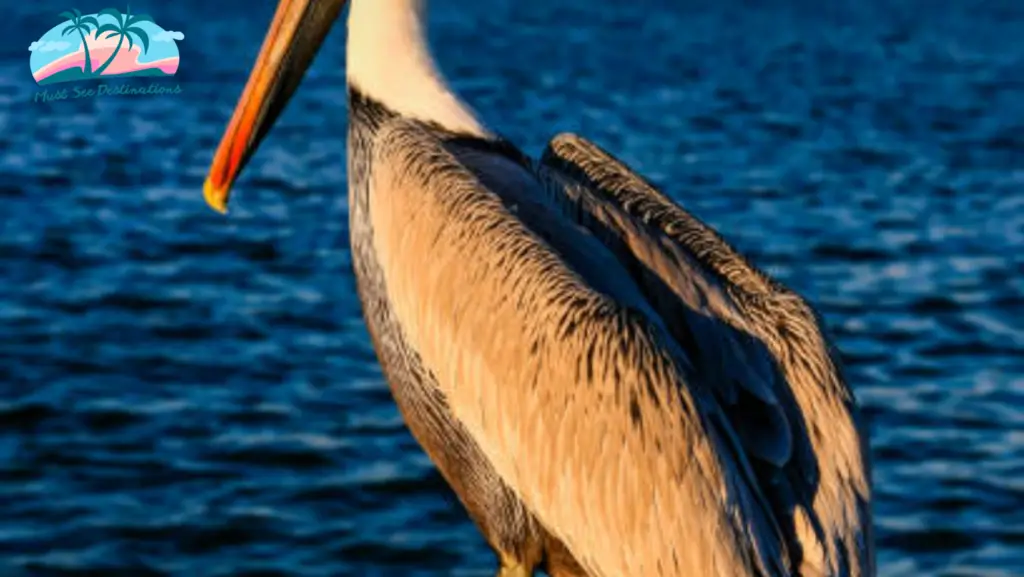
It’s also fascinating to see their feeding habits. They dive headfirst into the water when they discover fish below, searching for a nice meal.
The Brown Pelican was critically threatened in the 1960s. Pesticides such as DDT wiped out their numbers. DDT was prohibited in Florida in 1972, and the bird miraculously recovered.
The Brown Pelican is the state bird of Louisiana and appears on the state seal, coat of arms, and flag. It is also the national bird of Barbados, Saint Martin, Saint Kitts, Nevis, and the Turks and Caicos Islands.
Dowitchers:
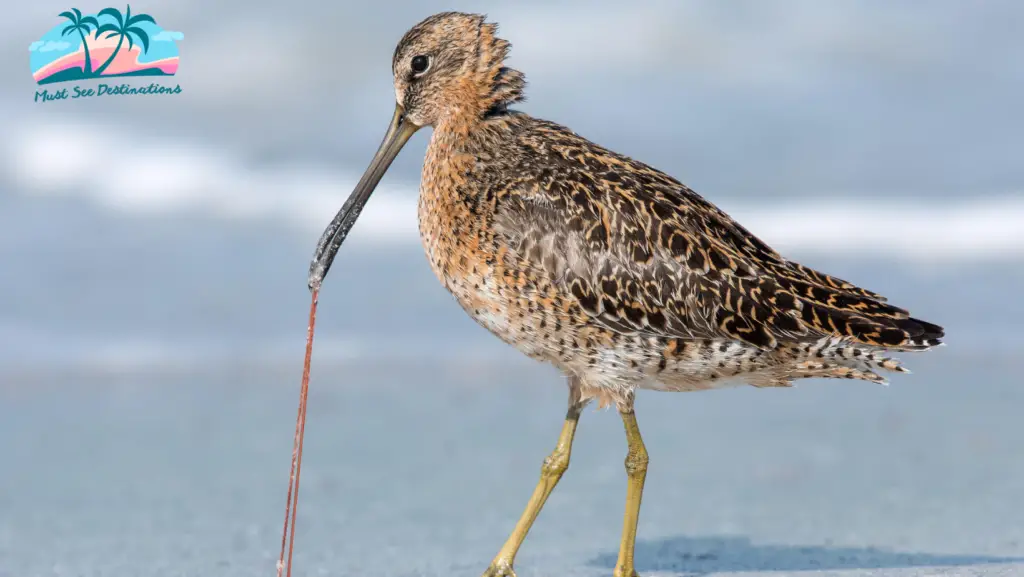
Dowitchers can also be found wandering along the water’s edge. They’re a tad slower and more significant than Sanderlings. They also don’t move about as much as Sanderlings. According to the season, dowitchers have a long, thin bill and are grey or light brown.
At times, you’ll see them in flocks of 100 or more. Dowitchers and most shorebirds will often flee rather than take flight when humans approach.
The Short-billed Dowitcher and the Long-billed Dowitcher are the two types of Dowitchers that can be seen on Florida’s beaches.
Long-Billed Dowitchers:
The long-billed Dowitcher (Limnodromus scolopaceus), which has the larger bill of the two, pokes and probes the sand in the same manner as the others.
However, listening to Dowitchers rather than glancing at their invoices is perhaps a better way to tell them distinctly. “Peet-Peet-her-wee-too,” says the Long-billed Curlew. The short-billed voice is a sweet Tu-tu-tu-tu-tu-tu-tu-tu-tu-tu-tu-tu-tu-tu-tu-tu-tu-tu
Short Billed:
Compared to the Large-billed Dowitcher’s bill (Limnodromus griseus), the Short-billed Dowitcher (Limnodromus griseus) has a shorter statement.
A chubby, magnificent orange, brown, and golden shorebird with a long bill, the short-billed counterpart is a plump, gorgeous orange, brown, and golden shorebird.
They enjoy wetlands, coastal mudflats, flooded fields, and even sewage ponds in Florida.They probe for food like a sewing machine by thrusting their bill straight up and down.
Willet Shore Birds Florida:
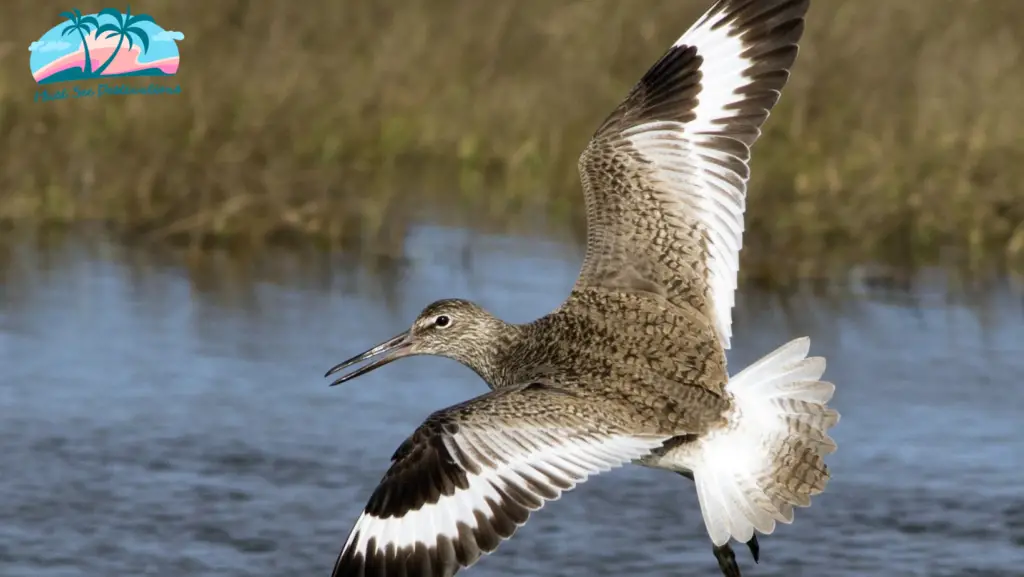
The Willet is one of the larger Florida shorebirds. The Willet is a long-billed shorebird with long legs and a grey body. They prefer to travel in small groups, either alone or in couples.
The clumsy shorebirds forage by wandering along the beach in shallow waters, swamps, and marshes, probing the mud or water with their bills. They make a loud, piercing call when alarmed. They will open their wings and run rather than fly away when approached.
In Florida, two birds are particularly well-known for their lovely pink color!
Roseate Spoonbill
The Roseate Spoonbill is a bright pink bird with long legs and a spoon-shaped bill that makes it easy to detect. Platalea ajaja is the scientific name for one of the most beautiful wading birds.
Because the Roseate Spoonbill prefers to avoid people, it can be found in locations where there is little to no human activity.
Waterways, lakes, marshes, and ponds are known hunting grounds for the Roseate Spoonbill.
The bird snaps the prey shut in its mouth using its outstanding bill.
This lovely bird has a wingspan of 47.2-51.2 inches and weighs 42.3-63.5 oz.
Greater Flamingo:
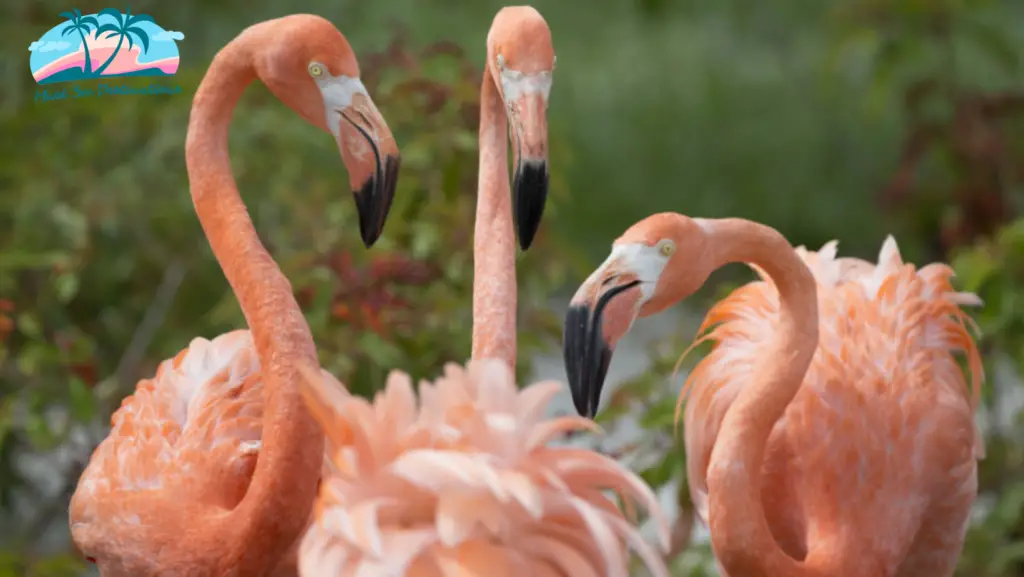
Whether or not Flamingos are native to Florida has been debated for years. There have been several sightings of the Greater Flamingo in the state, regardless of their origins! These pink-colored birds used to be plentiful in the Everglades, but they aren’t as expected now.
The Greater Flamingo and the American Flamingo, on the other hand, are both gorgeous to see and should be on your list of Florida seabird sightings!
Black Shore Birds of Florida:
There is no shortage of black shorebirds in Florida, and some of them have made it onto our list! Let’s have a glance at it.
Black Skimmer:
The black skimmer has an outstanding bill, with the lower bill extending further than the upper bill. It is deep black on top and white towards the bottom. The Black Skimmer looks into ‘skim’ over shallow waters in quest of prey.
The bird is most active in the evenings, just before sunset. It’s a medium-sized bird weighing between 9.3 and 12.9 ounces. These birds’ vertical eyes have narrowed to slits, allowing them to avoid the ocean’s glare and white sand while moving or relaxing on the beach.
Oystercatcher:
The Oystercatcher is another shorebird with a long reddish-orange bill that is black on top and white on the underside. It’s a bit creature that prefers to be alone or in couples.
Oystercatchers, as the name implies, enjoy eating bivalves such as oysters. Clams and mussels are also targets. This bird’s mainly constructed beaks make it easy for them to pry open oysters.
The giant legs of these birds, which are thicker than those of most coastal birds, are excellent for supporting their stocky bodies.
Ibis:
The Ibis (Eudocimus Albus) is a medium-sized bird with a curved red bill and a white and red face. Their brilliant red legs will be seen wading through water while their bent red bill pokes and explores the filthy silt beneath the surface.
They hunt for food by probing and prodding beneath the water and catching items off the surface by sight. They are ferocious guards of their mates from other males and relentless guardians of their nest from other Ibises that prefer to steal sticks from their nests.
Florida shorebirds in Blue color:
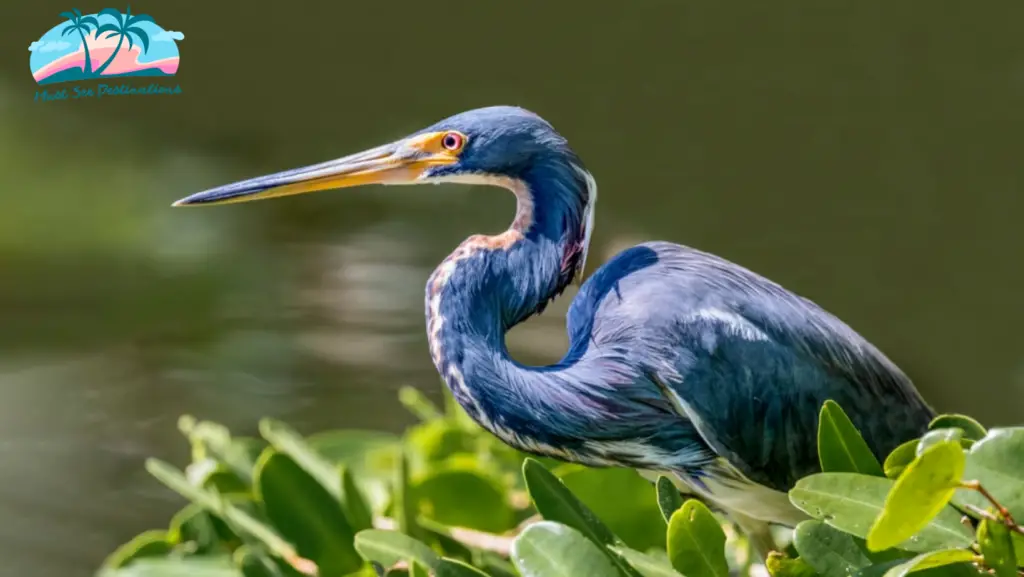
Blue is a hue that captivates everyone’s interest in birds. It’s awe-inspiring to witness a bluebird take flight against the backdrop of blue skies. Bluebirds abound in Florida, particularly the three species listed below.
Great Blue Heron:
Ardea Herodias, the scientific name for the Great Blue Heron, is a solitary, soaring bird with a rather large body. The largest heron in North America, with a wingspan of 6.5 feet and a body length of 54 inches.
It can weigh anywhere from 74 to 88 ounces. The Great Blue Heron is a blue-gray bird with a brilliant yellow bill and a white head.
Fish, aquatic invertebrates, and small mammals such as moles and voles are all prey for this Florida bluebird. In and around the shallow waters of freshwater rivers, lakes, and marshes, the Great Blue Heron.
Little Blue Heron:
Little Blue Heron is a bluish-hued heron that is little in size, as its name suggests.
This lovely bird has a wingspan of up to 40 inches and is just 27-30 inches long. The Little Blue Heron is a little bird that weighs between 10.5 and 14.5 ounces. The bird’s scientific name is Egretta cerulean, and it has reddish-buff necks with delicate plumes on its heads.
The bill of the Little Blue Heron is similarly blue with a black tip. This bird can be found in Florida’s shallow waters, such as inland canals, lakes, ponds, and marshes. Fish, amphibians, and crustaceans are the main prey of the Little Blue Heron.
Tricolored Heron:
The Tricolored Heron, also known as the Louisiana Heron, has a blue-gray body with white underparts and a light-colored throat, hence the name.
The white stripe that runs down the bird’s neck is one of its most remarkable features. Their necks might get rusty in some situations, especially during the breeding season. The Tricolored Heron is very similar to the Little Blue Heron in terms of looks.
The Tricolored Heron is around 26 inches long and has a 36-inch wingspan. Throughout Florida, the bird found in marshes, ponds, and the shallow waters of rivers.The Tricolored Heron eats fish, insects, and other tiny prey.
-
Related articles:
